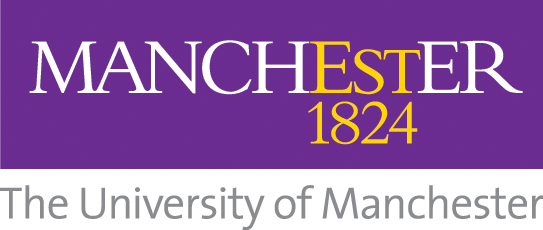Manchester. The John Rylands Library, Hebrew MS 36
- Source
- Manchester Digital Collections
- Library
- The John Rylands Library
- Shelfmark
-
- Hebrew MS 36
- Biblissima authority file
- Language
-
- Hebrew
- Title
-
- Hebrew Bible (תנ"ך)
- Agent
-
-
- Preferred form
-
- Aaron Aravi (14..-15..)
- Role
-
- Other
- Original form
-
- Aaron Aravi
- אהרן ערבי
- Biblissima authority file
-
- Preferred form
-
- Mordechai ben Jacob (14..-15..)
- Role
-
- Other
- Original form
-
- Mordechai ben Jacob from Kastoria
- מרדכי בכמ"ר יעקב מקשטורייא
- Biblissima authority file
-
- Role
-
- Other
- Original form
-
- Jacob Corfiti
- יצחק קופריטי
-
- Preferred form
-
- Theodore Williams (1785-1875)
- Role
-
- Former owner
- Original form
-
- Rev. Theodore Williams
- Biblissima portal
- Biblissima authority file
-
- Preferred form
-
- Bernard Quaritch (1819-1899)
- Role
-
- Former owner
- Original form
-
- Bernard Quaritch (b. 1819, d. 1899), bookseller and publisher
- Quaritch, Bernard, 1819-1899
- Other form
-
- Quaritch, Bernard (1819-1899)
- Bernard Quaritch
- Bernard Quaritch, 1819-1899
- Bernard Quaritch 1819-1899
- Bernard Quaritch, Limited
- Bernard Quaritch (1819-1899), bookseller and publisher
- see more
- Biblissima portal
- Biblissima authority file
-
- Description
-
- Extent:
445 ff. (ii+445+i) Leaf height: 193 mm, width: 138 mm. Written height: 118 mm, width: 84 mm.
Binding:
Brown leather binding with gold tooled letter R (of the Library) on boards, lettering on spine reading "BIBLIA HEBRAICA CUM MASORA MAG. ET PARV. CODEX VETUSTISSIMUS SUPRA MEMBRANIS" and gilded and decorated top, bottom and fore edges. Signature of binder on back bottom turn-in: W. PRATT.
Decoration:
Folio 1a: Gilded initial-word בראשית on a blue painted panel with fine red painted concentric and floral motives in a gilded frame. The frame bar ends in a doe’s head. On the left of the frame are painted flowers with gilded buds and black penwork tendrils.
Folio 30b: Gilded initial-word ואלה.
Folio 55a: Gilded initial-word ויקרא.
Folio 96b: Gilded initial-word אלה.
Folio 119a: Gilded initial-word ויהי on a red painted panel with fine yellow and red painted concentral and floral motives in a gilded frame with a long bar. On the left of the frame are painted flowers in red and blue with gilded buds and black penwork tendrils.
Folio 134b: Blank initial-word ייהי (presumably this must be ויהי) on a gilded field with a painted blue frame and another gold frame with a long bar. On the right of the frame are two painted birds and painted flowers with gilded buds and black penwork tendrils.
Folio 149b: Gilded initial-word ויהי.
Folio 186b: Gilded initial-word והמלך.
Folio 223a: Gilded initial-word חזון.
Folio 246b: Gilded initial-word דברי.
Folio 276a: Gilded initial-word ויהי.
Folio 302a: Gilded initial-word דבר.
Folio 392b: Gilded initial-word ויהי.
Acquisition:
Purchased for Enriqueta Rylands from Bernard Quaritch (b. 1819, d. 1899), bookseller and publisher in June 1892 (Library Invoices 97/1), and given by her to The John Rylands Library before 1900.
Layout:
The main text is in two columns (except for Psalms, Proverbs and Job) with 35 written lines.
Script:
Sephardi square script
Data Source(s):
Description based on Alexander Samely's unpublished draft catalogue and Gabrielle Sed-Rajna's unpublished description of decorations, revised and expanded by Stefania Silvestri, Renate Smithuis and Nienke Valk.
Subject(s):
Bible. Old Testament--Versions, Jewish
Abstract:
Illuminated Hebrew Bible in Sephardi script. According to the catalogue of Bezalel Narkiss, the Bible contains French- and Italian-style decorations and should most likely be dated to the last quarter of the fifteenth century. The Bible contains Masorah Magna and Parva and Tiberian vocalisation and cantillation signs. It contains a reference to the year 1325 (i.e. 6 or 26 Tevet 5086), though the original function of that date is unclear. The Bible was once owned by a named Jew living in Kastoria in northern Greece. Later the Bible came into the possession of Johannes van der Hagen while he lived as a pastor in eighteenth-century Amsterdam. Having left a few notes in the codex, he mentions the date 26 April 1726.
Foliation:
Double foliation at the top outer corner of side a of each folio, fully or partially cropped on multiple folios. The two errors in foliation (i.e. there is only one folio 28-29 and two folios are numbered 326) show that the Hebrew foliation was added first. Johannes van der Hagen might have added the Arabic numerals. Both types of foliation are in ink.
Format:
Codex
Material:
Parchment
Provenance:
Folio iia: Ownership note in Hebrew made by "יוסף בכ"ר יעקב המכונה קשתו נ"ע טרייא" from Kastoria.
Folios iia and 445a: Notes in Hebrew in calligraphic style.
Folio iib: Same note in Hebrew repeated twice reading "בסמנא טבא היום ראשון בשבת כ"ו ימים לחדש טבת שנת פ"ו לאלף הששי".
Folio iib: Ownership note of which the name contains Jacob.
Folio iib: Note in Latin reading "Haec eadem verba legerunt in hujus pagina parte / superiore sed parvim decrita: ?sive propter / [...] iterum describi curavi, anno Christi 1726, aprili / 26, Johannes Vander Hagen, pastor Amstelodami". The note is dated 1726 in Amsterdam. Preceding the Latin note Johannes van der Hagen copied the Hebrew note at the top of the folio.
Folio 1a: Handwritten note in Hebrew.
Folio 444a: Lengthy purchase note in Hebrew from the year 271 [= 1511] between the seller Aaron Araviאהרן ערבי and the purchaser Mordechai ben Jacob from Kastoriaמרדכי בכמ"ר יעקב מקשטורייא. The name Jacob Corfitiיצחק קופריטי is also mentioned.
Folio 444a: Birth note of "מרדכי בן אברהם ביום "ג’ כב לחודש שבט הרצ"ב", who was born on Tuesday 22 Shevat 5292 [=8 February 1532, in fact a Monday] and was circumcised on Tuesday 1 Adar [=17 February, in fact a Wednesday].
Folio 444b: Owner's signature: "הצעיר שמואל[?]".
Folio 445a: Two ownership notes.
Folio 445b: Note in Latin reading "Haec eadem verba legerunt ad calcem hujus / codicis scripta ?Liveris Rabbinicis quae, / quia difficile lectu erant, hic de novo descri= / bi curavi, anno Christi 1726, aprili 26, Johannes / Vander Hagen, pastor Amstelodami". The note is dated 1726 in Amsterdam. Preceding the Latin note Johannes van der Hagen copied the two Hebrew notes on folio 444a.
Back paste-down: Bookplate of "THE JOHN RYLANDS LIBRARY / 1894"; handwritten note in pencil reading "R4594" and in pen "Hebrew MSS. / 36".
Spine: Handwritten label reading "HEBREW / 6".
According to a handwritten catalogue by E. Gordon Duff of the John Rylands Library manuscripts, this manuscript was formerly in the possession of Rev. Theodore Williams.
Note(s):
Running heads mention the relevant Bible book and (in case of the Pentateuch) parashah. The first word of each Bible book of the Pentateuch, the Prophets and Ruth has been gilded, with the exception of Numbers (folio 72a), where the blank space left for the gilded initial-word has remained unfilled. The first word of each parashah is written in a larger square script in the middle of a separate line. Of the Twelve Prophets only Hosea has received a gilded initial-word, while the beginning of the other Minor Prophets and the Writings is marked by some blank space only. The order in which the megillot appear is Ruth, Song of Songs, Ecclesiastes, Lamentations, Esther. The latter is entitled Achashverosh. There is only one heading for Ezra and Nehemiah (i.e. Ezra). With Tiberian vocalisation and cantillation signs. Masorah Magna and Parva in standard layout, at top, bottom and in between columns. Narkiss describes the manuscript under no. 49 as "Manchester Franco-Spanish Bible."
- Extent:
- Rights
-
- Provided by The University of Manchester. Zooming image © University of Manchester Library, All rights reserved. Images and Metadata made available for download are licensed under a Creative Commons Attribution-NonCommercial 4.0 International License (CC BY-NC 4.0). Images and Metadata made available for download are licensed under a Creative Commons Attribution-NonCommercial 4.0 International License (CC BY-NC 4.0).

